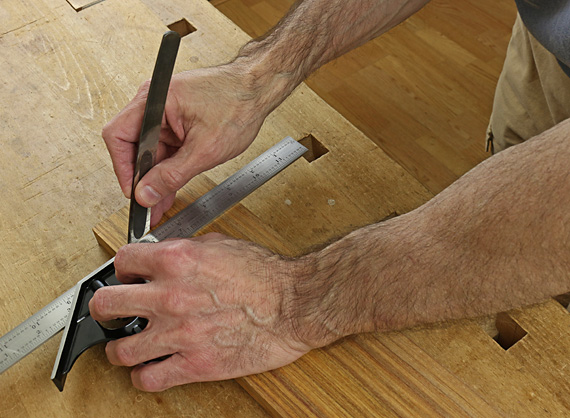
Elsewhere in this blog, I’ve contended that woodworking isn’t quick, easy, or perfect every time, and false promises of such delights by some tool advertising and sources of instruction can discourage those learning the craft, who eventually encounter the truth but wonder if the difficulties are their fault. Moreover, perfection is an illusory pursuit that can lead to discouragement and loss of nerve, and is better replaced by a knowledgeable pursuit of excellence.
Yet, I think most anyone with strong dedication, good tools, proper instruction, and decent manual dexterity can develop the individual skills needed for excellent woodworking.
So, what makes woodworking difficult? Why is it pretty hard to learn how to make a project turn out the way you hope? What is the missing link that takes you from learning how to cut a mortise and tenon joint to being able to confidently make a table? In other words, what is the most essential thing to learn in woodworking?
I think it is this: putting it all together. This means being cognizant of the context of each step of the process, so that as steel meets wood, you understand what you’re really doing and why. You must appreciate how the skill being executed at the moment fits into the whole construction. That appreciation informs your approach to the task at hand.
For example, when you flatten the stock for casework, you are aware of why it needs to be flat, the range of flatness tolerance required, and the consequences of sloppiness outside of tolerance. You know when to bear down for high precision but also when punctiliousness is, at best, a waste of energy. So, you have a different mentality when preparing stock for drawer sides compared to drawer bottoms.
Here are more examples. You sense how to make that mortise and tenon joint accurate not just for itself but also for how it will contribute to the accuracy of the whole table coming together. You have this sense even when you are marking out (photo above). In the design process, you appreciate how individual elements have to coordinate into an aesthetic whole that you are also capable of building.
And you understand how “perfect every time” is silly.
Of course, you cannot have all the steps of a project top of mind at once. However, with experience (and for most of us, that means sometimes dealing with failure) you learn to absorb the big picture. It shapes a correct mental approach that you carry with you. With this awareness, your work becomes natural and flowing. The cognizant mentality is not at all burdensome but rather is energizing because you know how to value each step in the journey.
Good musicians know this. Playing notes, even if technically excellent, is one thing; making music quite another. The impact, presence, and style of the whole piece inform the treatment of each passage. I suppose being good at anything is like this, but with woodworking it is right there in front of us.
And finally, another thought for another day: how does making something in wood fit into everything else? (And for me, it must.)



